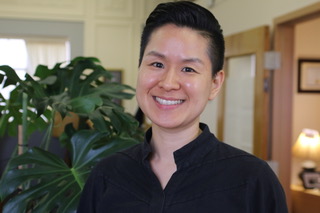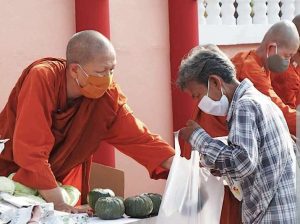
As the Parliament of the World’s Religions draws near, I ponder Wŏn Buddhism’s goal of fostering unity among global religious and spiritual communities. Sotaesan’s outlook on religious pluralism was expressed as follows:
The fundamental principles of all the world’s religions are also essentially [non-dual], but as different religions have long been established with different systems and expedients, there have been not a few incidents of failure to reach harmony and dialogue between these religious groups. All this is due to ignorance of the fundamental principles underlying all religions and their sects. How could this be the original intent of all the buddhas and sages?
(Kim 2016, 18)
According to Sot’aesan, the main cause of religious disharmony is ignorance of the non-duality of these fundamental principles—principles that are not human creations but that are given expression through religion. Stripped of religion, these principles are ineffable and beyond words and speech. Historically, charismatic religious leaders have accessed the fundamental principle underlying all things through intuitive insight and have then expressed this personal experience through language or rituals relevant to their time and location. As history shows, however, religions evolved into different forms, split into factions, and eventually misrepresented the original intent of their founders. In many cases, religious teachings take on a political role and are employed by one school to gain legitimacy over another. And so, what began as the intent to convey an experience of this fundamental principle turned into strident voices vying for legitimacy and authenticity.
Sot’aesan named this fundamental principle Il-Wŏn (Unitary Circle) and explained that Il-Wŏn is the original of the myriad things in heaven and Earth and the realm of samādhi beyond all words and speech. Confucianism calls it the grand ultimate (t’aegŭk) or the ultimate of non-being (mugŭk), Daoism calls it nature or the Way (to), Buddhism calls it the pure Dharmakaya Buddha. In principle, however, all of these are different expressions for the same thing.
Although he confines his explanation to three Eastern religious traditions, we can assume that Sot’aesan encompasses Western traditions in his explanation, especially in the following conversation he had with an elder of a Protestant church:
The Founding Master said, “If a Christian becomes a disciple who truly knows Jesus, he will come also to understand what I am doing; and, if one becomes a disciple who truly understands me, he will come to understand what Jesus accomplished. Therefore, ignorant people maintain gaps between this and that religion and so think themselves to be apostate, thereby becoming hostile to other religions. However, those with real understanding know that these religions have different names merely according to the time and place, and come to view them all as belonging to a single household. Thus, you should use your own discretion whether you stay or go.” Songgwang rose to his feet, bowed, and vowed anew to become his disciple. The Founding Master assented and said, “Even after you have become my disciple, you will be a true disciple of mine only when your reverence for God grows stronger.”
(Kim 2016, 463)
Sot’aesan was confident that all great religious teachers had shared the same original intent. This intent is what the Chinese thinker Confucius (551–479 BCE) expressed as shu (reciprocity), or what is widely known as the ethical Golden Rule, which states, in its positive form, “Always treat others as you would wish to be treated yourself.” According to Sot’aesan, if one understands the original intent of one sage, then the intent of all other sages becomes clear, so there is no reason to leave one religion to convert to another. Moreover, Sot’aesan believed that pluralism was not relativism, but consisted of respecting others’ commitments and encouraging them to investigate the original intent of the founder of their own religion. As Bokin Kim explains, when Sot’aesan encountered other religious traditions, his aim was not to proselytize but to “embrace and integrate other teachings through dialogues.” (Kim, 90) Sot’aesan used the term “single household” to indicate that different names occur merely because of differences in time and place.
The question remains: How does one truly understand the sage’s intent?
Sot’aesan expressed his view on this in a conversation with a Christian minister:
The Christian minister said, “I have come to hear your good dharma-admonitions.”
The Founding Master said, “Then, have you been able to overcome the limits of Christianity and see the vast heaven and earth?”
The minister asked, “Where is that vast heaven and earth?”
The Founding Master said, “You’ll find it when once you open your mind and take a broad perspective. A person who does not take a broad perspective is always preoccupied with his own affairs, and familiarizing himself only with his own traditions, criticizes others’ affairs and rejects their traditions. In this way, each person cannot overcome his own norms and conventions, and will eventually fall into one-sidedness, producing gaps that become like mountains of silver and ramparts of iron. This is the reason for all the antagonisms and conflicts between countries, churches, and individuals. Why should you separate the great household that is originally perfect, and divide the great dharma that is infinite, into bits and pieces? We must abolish this gap right away, and interconnect all households to develop a full and energetic new life. Then, there will be nothing in this world that should be discarded.”
(Kim 2016, 334)
Sot’aesan told the Christian minister that in order to understand the intent of the sage, you need to “open your mind and take a broad perspective.” By “open your mind,” he was referring to discarding dualistic ways of thinking.
One of the reasons Sot’aesan was fascinated with Śākyamuni Buddha, and the Diamond Sutra in particular, is that they emphasize the doctrine of no-self and śūnyatā (emptiness). He expressed the experience of no-self in the following passage:
Once enlightened to the truth of this Wŏn-Sang (Circle Image), we will know that the triple worlds in the ten directions are our own property; that all things in the universe are non-dual despite their different names; that this is the nature of all the buddhas, enlightened masters, ordinary humans, and sentient beings; that the principle of birth, old age, sickness, and death operates like spring, summer, autumn, and winter; that the principle of the retribution and response of cause and effect operates like the alternating predominance of yin and yang; and that this is perfect and complete, utterly impartial and selfless.
(Kim 2016, 22)
The “non-duality of diversity” means engaging with religion in a way that takes into consideration our common humanity. Sot’aesan argued that religion’s true purpose is to see that the Absolute does not reside somewhere far off, but that the Absolute (nature) already resides in the relative (all people and things). In the Wŏn Buddhist lexicon, this is expressed as “Everywhere a Buddha image; every act a Buddha offering.” Sot’aesan said: “Regardless of time or place, we must never neglect to maintain a respectful state of mind and pious attitude we have for the venerable Buddha. We should also exert ourselves to make Buddha offerings directly to the myriad things themselves and thereby create merit and happiness in a practical manner.” (Kim 2016, 128)
The same rule applies in the case of religious dialogue. Coming to the table to participate in a discussion with other religions requires a twofold commitment: discerning the differences among traditions, and recognizing that, as a rule, all voices, no matter how strident they may be, arise from a common humanity. Such a commitment requires magnanimity, rectitude, and inquiry. It requires the individual to shine the light inward first before pointing the finger outward.
Sot’aesan believed that religious leaders play a pivotal role in helping people to realize the non-duality of the diversity of all things. In the coming age, arguing for religious dialogue on the basis of “societal duty” will not be enough to convince people of the necessity and benefits of engaging in inter-religious discussion. Sot’aesan believed that people had to awaken to the truth of non-duality, or no-self and act from that experience, or else it would be mere obligation. Once we are certain that diversity is the other side of interconnectedness, then social cohesion and dialogue among religious traditions becomes a responsibility, not a choice.
References
Kim, Bokin. 2000. Concerns and Issues in Won Buddhism. Philadelphia: Won Publications.
Kim, Bokin. 2016. The Doctrinal Books of Wŏn Buddhism. Iksan: Wŏn’gwang Publishing.
Related features from BDG
Buddhistdoor View: Reclaiming the Spirit of Vesak in a Chaotic World
Toward a Multi-faith Vision of University Chaplaincy in America: An Interview with Reverend Greg McGonigle
Buddhism and Daoism: A Millennia-Long Dialogue
Inter-religious Dialogue: Are Buddhists Doing Enough?
Related news reports from BDG
Engaged Buddhism: INEB Hosts Landmark Interfaith Gathering in Bangkok for Gender Equality and Social Justice
Young Buddhist Association of Indonesia Holds Interfaith Dialogue on Religious Moderation
Buddhists from Thailand Visit Vatican for Interfaith Dialogue
Young Buddhist Association of Indonesia and Rumi Institute Organize an
Interfaith Dialogue on “Religion of Love”
Young Buddhist Association of Indonesia Holds Interfaith Dialogue on Women and Spirituality
Buddhists Offer Mindfulness and Inter-religious Dialogue on Faith and Science ahead of COP26












